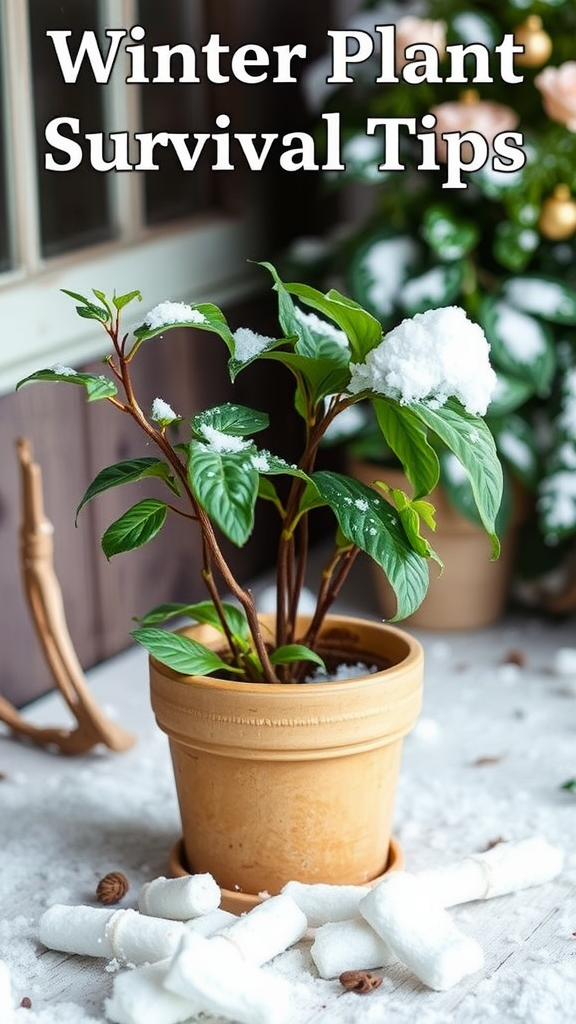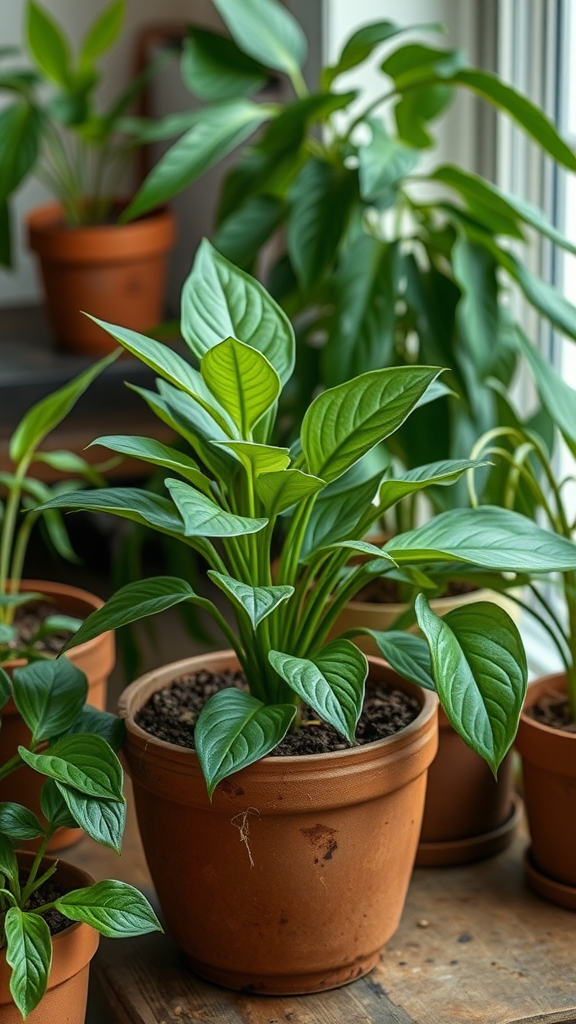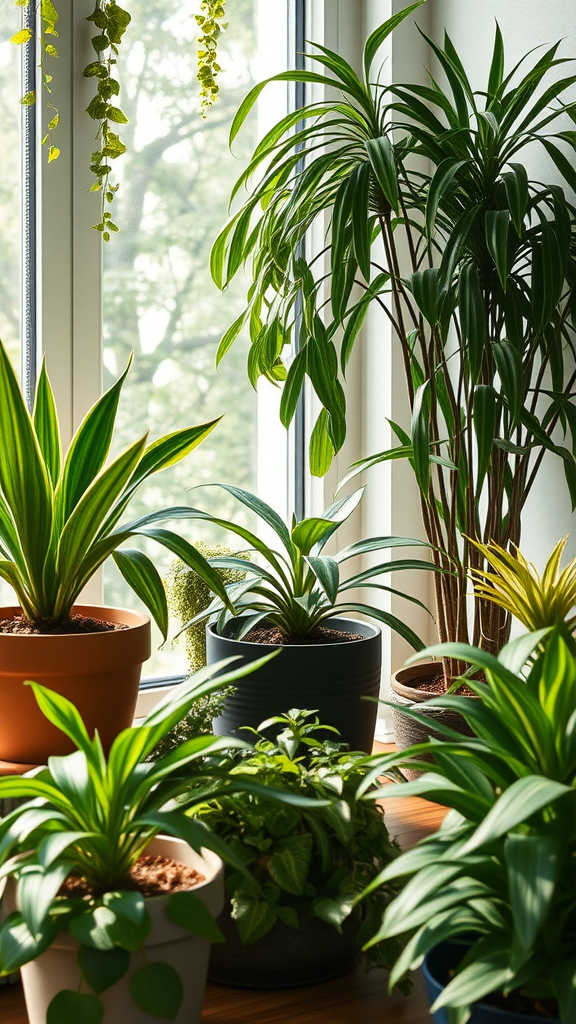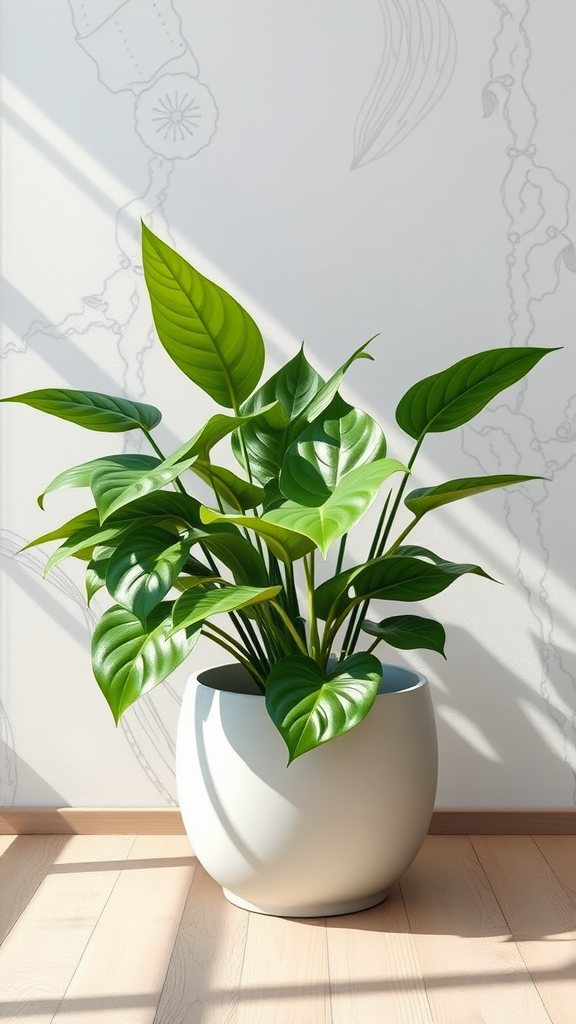Essential Winter Plant Survival Tips: Strategies to Keep Your Plants Alive
Winter can be tough for your plants, but with the right strategies, you can help them thrive despite the cold. Understanding how to protect your greenery during this colder time is essential for any gardener. Here are some vital tips to ensure your plants survive and stay healthy through the season.
Know Your Plants
First and foremost, it’s crucial to know the specific needs of your plants. Different species have varying tolerance levels to cold. Some plants may need extra protection, while others might be more resilient. Research your plants and categorize them into those requiring more care and those that can withstand harsh winters.
Mulching: A Winter Blanket
One of the simplest yet effective methods to protect your plants is through mulching. Applying a thick layer of mulch around the base of your plants helps retain soil heat. Mulch also prevents frost from harming roots. Here’s how to do it:
- Choose organic mulch such as straw, shredded leaves, or wood chips.
- Spread a 3 to 4-inch layer around your plants.
- Keep the mulch a few inches away from the stems or trunks to avoid rot.
Water Wisely
During winter, plants need water, but it’s essential to do it correctly. Overwatering in cold temperatures can lead to root rot. Follow these guidelines:
- Water the plants early in the day, allowing excess moisture to evaporate.
- Check the soil moisture before watering; it should be slightly dry to the touch.
- Reduce watering frequency as the temperature drops.
Cover Your Plants
If temperatures plummet, consider covering tender plants. A simple frost cloth can shield plants from freezing temperatures. When using covers, remember:
- Remove covers during the day when the sun is shining.
- Ensure the cover allows for air circulation to prevent mold.
- Use stakes to keep covers from touching the plant to avoid damage.
Bring Potted Plants Inside
Potted plants are particularly vulnerable to extreme cold. If you can, bring them indoors or to a sheltered area. If moving them isn’t feasible, group them together to create a microenvironment that can retain heat. Some other tips include:
- Place them near a window for sunlight.
- Keep them off cold surfaces by elevating them on trays or pots.
- Monitor for pests that might thrive indoors.
Prune with Caution
While you might be tempted to prune your plants during winter, it’s best to do so gently. This helps plants focus their energy on surviving the cold. Here are some pruning tips:
- Remove any dead or damaged branches to prevent disease.
- ONLY prune if necessary, as excessive cutting can stress plants.
- Wait until late winter or early spring before major pruning to avoid exposure.
Fertilizer Use
Winter is typically not the best time to fertilize your plants, as they go dormant and need less nutrition. However, a light application of fertilizer in early winter can provide support. Focus on:
- Using slow-release fertilizers.
- Avoiding high-nitrogen formulas that encourage new growth.
- Applying in moderation to support health without causing stress.
Monitor Temperature and Weather
Regularly check weather forecasts and be prepared to act. If a cold front is on its way, take extra precautions to protect your plants. Keep an eye on:
- Temperature drops and prepare to cover or move plants accordingly.
- Soil moisture levels, adjusting irrigation as needed.
- Signs of distress in your plants, such as yellowing leaves or wilting.
With these essential winter plant survival tips, you can successfully keep your plants alive and thriving during the colder months. Remember, a little preparation goes a long way. Take the time now to safeguard your plants, and you will be rewarded with healthy greenery come spring.
Common Mistakes to Avoid in Winter Gardening
Winter gardening can be both rewarding and challenging. As the temperatures drop and daylight hours wane, many gardeners find themselves at a loss for how to protect their plants effectively. Avoiding common mistakes can mean the difference between a thriving garden and a disappointing one. Here are some pitfalls to watch out for this winter.
Neglecting Plant Hardiness Zones
One of the biggest mistakes gardeners make is not paying attention to their specific plant hardiness zones. Understanding which plants thrive in your area is crucial. Each plant has a designated hardiness zone that determines what temperatures it can tolerate.
- Always check your USDA hardiness zone before planting any new varieties.
- Group plants by their hardiness ratings to make it easier to provide proper care.
Watering Missteps
Winter doesn’t mean you can forget about watering entirely. Many gardeners underestimate the water needs of their plants during cold weather. While it’s true that the evaporation rate is lower, your plants can still dry out.
- Check the soil moisture regularly. If it feels dry a couple of inches down, it’s time to water.
- Water early in the day to prevent ice formation in the soil overnight.
Over-Mulching or Under-Mulching
Using mulch incorrectly can harm your winter garden. Too much mulch can suffocate plants and retain too much moisture, while too little offers no protection against harsh conditions.
- A 2 to 4-inch layer of organic mulch is ideal; it provides insulation and retains moisture without smothering plant roots.
- Make sure the mulch is not piled against the stems of plants, which could lead to rot.
Ignoring Pest Activity
Many believe that cold weather eradicates pests. However, many insects can become dormant and re-emerge in spring or even cause problems during milder winter days. Stay vigilant.
- Regularly inspect your plants for any signs of pest activity.
- Utilize natural pest deterrents during winter to minimize damage.
Failing to Protect Sensitive Plants
Certain plants require extra attention during winter. If you neglect to protect these delicate varieties, you risk losing them come spring. Be proactive in giving them the care they need.
- Cover sensitive plants with burlap or frost cloth to shield them from freezing temperatures.
- If possible, bring potted plants indoors to a warmer environment.
Not Pruning Properly
Winter is often a good time for pruning, yet many garden enthusiasts either skip it or do it incorrectly. Incorrect pruning can lead to improper growth or damage.
- Remove any dead or diseased branches to keep the plant healthy.
- Make clean cuts at a 45-degree angle to encourage healthy regrowth in spring.
Disregarding Soil Health
Your plants rely on healthy soil, even in winter. Poor soil can lead to root rot and insufficient nutrient absorption.
- Conduct a soil test to check pH levels and nutrient content before the winter set in.
- Add organic compost to enrich the soil and improve its health.
Not Preparing for Snow and Ice
While a blanket of snow can be beautiful, heavy snow and ice can damage plants. Ignoring this can lead to breakage and stress on your plants.
- Shake off any heavy snow accumulation from branches to prevent breakage.
- Consider using protective barriers or stakes to shield delicate plants from ice.
By steering clear of these common mistakes, you can improve your winter gardening experience and ensure that your plants not only survive but thrive. Keep observing, learning, and adapting your care methods to fit the seasonal challenges of winter gardening.
Conclusion
As winter approaches, the challenge of keeping your plants thriving becomes more pressing. By following essential winter plant survival tips, you can create a nurturing environment that safeguards your garden against the cold. From selecting the right location with adequate sunlight to utilizing protective covers like frost cloths and mulch, every small step you take can make a significant difference.
It’s equally important to recognize and avoid common mistakes in winter gardening. Overwatering is a frequent error that can lead to root rot, especially during colder months when evaporation is minimal. Additionally, failing to clean up your garden by removing dead leaves and debris can invite pests and disease, putting your plants at risk.
Understanding your plants’ specific needs is crucial. Some varieties thrive in cold temperatures, while others need extra care and protection. Always research the types of plants in your garden to tailor your winter care approach effectively.
By implementing these strategies and being mindful of pitfalls, you can enjoy a flourishing garden even in the depths of winter. Remember, winter offers a fresh perspective on nurturing plants; it’s a time for reflection and preparation for the upcoming growing season. With proper care and attention, your plants will not only survive but emerge stronger when spring arrives. Your efforts now will pave the way for a vibrant, thriving garden in the warmer months ahead. So gear up, embrace the cold, and keep your plants happy all winter long!





